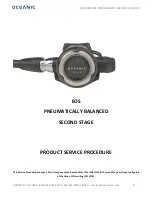
8
TE-BA-e-2020
10.
General notes
10.1 The measuring instrument should always be adjusted on the base material used
for the actual measurement, instead of on the supplied zero plate. This ensures that
the measuring accuracy is more accurate from the outset.
10.2 The measuring probe may wear out. The service life of the measuring probe
usually depends on the number of measurements and the roughness of the layer to be
measured. Replacing such a probe should only be carried out by qualified personnel.
11.
Restore factory settings
It is recommended that the factory settings be performed in the following cases:
- no more measurements can be made at all
- the measuring accuracy is impaired due to drastic changes in the environment in
which the measuring instrument is used
- After replacing the measuring probe
The factory settings include both the settings for "Fe" (F) and for "NFe" (N). One or
both can be set separately.
The procedure is described below:
A distinction is made between the symbols "Fe" type and "NFe" type. If "Fe" appears
on the display, the factory setting for "Fe" is made, if "NFe" appears, the factory setting
for the "NFe" type is made.
- Press the on/off button 4-6 and do not release until "CAL" appears on the display.
This takes about 5 seconds from the start of pressing the on/off button.
- If F:H (or NF:H) now appears on the display, the measuring probe is raised by more
than 5 cm. Then the zero key is pressed and the instrument returns to the measuring
mode. This restores the factory setting.
Note: This process should always be completed within the following 6 seconds.
Otherwise, it will be automatically interrupted by the unit and the reset will be invalid.
12.
Notes
With the
LN function it is
possible to change the linearization of the meter, which is
given by the calibration (this is controlled by the on/off button and it takes about 11
seconds from the beginning of pressing this button).
However, it is expressly recommended not to make any changes to the
LN value
, as
this change will lead to deviating measurement results.
Any change in the LN value can significantly affect the measuring accuracy. This
value should only be set by qualified personnel.



























